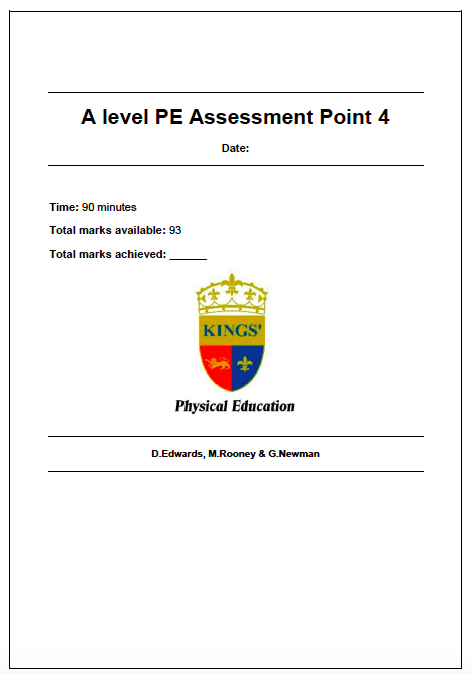A-level PE Mock Exam
Within this exam the following content will be covered.
- Physical, Emotional & Social Health
- Lifestyle Choices
- Consequences Of A Sedentary Lifestyle
- Balanced Diet & The Role Of Nutrients
Marking Terminology
A01 - Usually a state question - EG State the muscle in the upper arm. - Usually worth 1-3 marks
A02 - Usually an explain question - E.g. Explain the lifestyle choices a teenage boy may have. - Usually worth 2-5 marks
A03 - Usually a analyse question - E.g. Analyse how the movement is created during a penatly kick. - Usually worth 6-9 marksNew Paragraph
Using the walking talking mock page.
Exam Questions
The exam questions on the left can be zoomed in, printed out, and moved around
"Perfect answer video"
The perfect answer is shown on the right, this talks through the perfect answer based on the mark scheme
The Mark Scheme
The full mark scheme can be found at the bottom of the page
Full Exam
Using the full exam
Click on the image to "pop out" the exam paper.
download and printed the exam
Using the QR code in each corner you can scan and get the "perfect answer" for each exam question (the videos show here)
Full Mark Scheme
Marking Terminology
A01 - Usually a state question - EG State the muscle in the upper arm. - Usually worth 1-3 marks
A02 - Usually an explain question - E.g. Explain the lifestyle choices a teenage boy may have. - Usually worth 2-5 marks
A03 - Usually a analyse question - E.g. Analyse how the movement is created during a penatly kick. - Usually worth 6-9 marks

